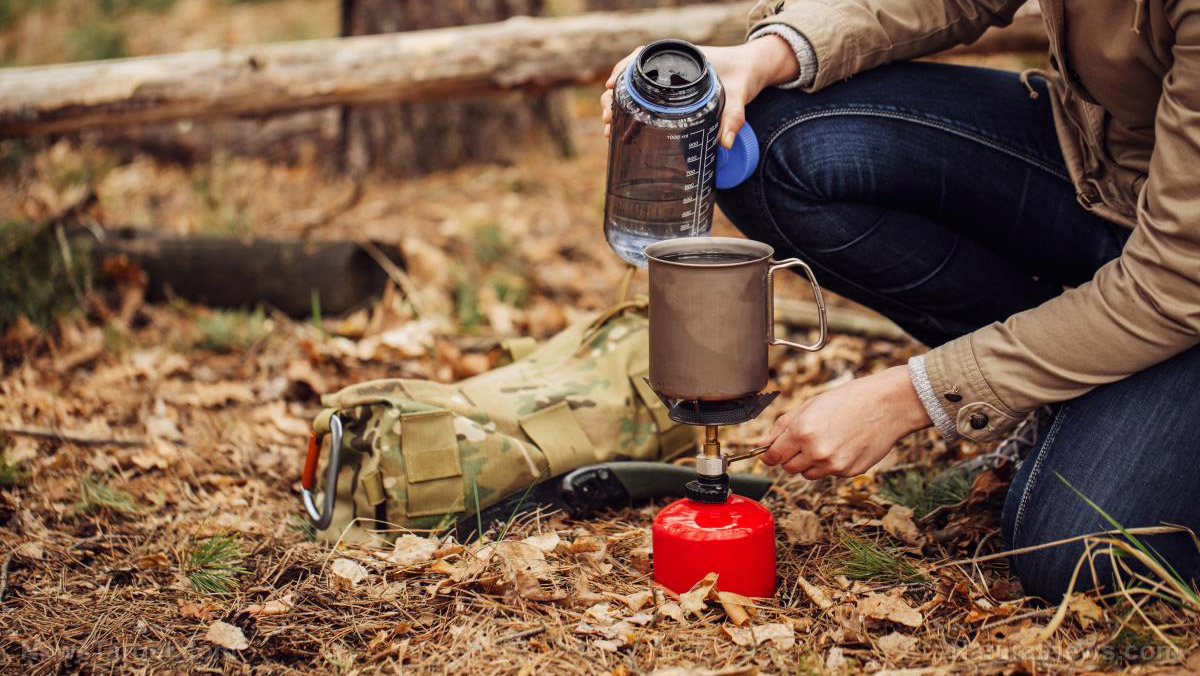Prepping 101: Tips for building an emergency food supply
03/14/2019 / By Zoey Sky

Prepping can be overwhelming, especially if you’re new to this self-sufficient lifestyle. Take things slow and start by building an emergency food supply so you can keep your family well-fed even after SHTF. (h/t to ApartmentPrepper.com.)
Survival food basics
Before you head to the grocery store, ask yourself this question: Do you want to buy pre-built food storage packages, or do you want to create your own?
If you want to quickly add supplies to your stockpile, the best option is to purchase emergency food kits. You can buy emergency food kits at online stores, or you can visit stores that offer outdoor goods. Regardless of where you buy your supplies, always purchase products from trusted brands. When SHTF, you don’t want to be stuck with food that has already gone bad even before you start consuming it.
For those who want a more hands-on experience, creating your own kit is the best option. This way, you can personally select what kind of item goes in your kits.
5 Things to consider when buying survival food
Consider these factors before you start purchasing items for your pantry:
- Does it have a long shelf-life? There’s no point stockpiling food that will go bad after less than a week.
- Is it nutritious? When SHTF, you will need access to healthy foods more than ever, especially if you can no longer leave your home to purchase new supplies.
- Is it easy to prepare? You don’t want to waste time preparing food during a disaster scenario.
- Is it heavy? Consider stockpiling food that’s light and portable so you won’t have a hard time bringing supplies for several days if the whole family needs to evacuate.
- Is it delicious? Food needs to be palatable even when you’re eating it in a post-SHTF world. Balance your nutritious food supplies with comfort food that can help the whole family relax when things are tough.
Items to include in your food stockpile
Below are some suggestions if you’re not sure what kinds of items to include in your emergency food supply.
- Apple cider vinegar – Apple cider vinegar (ACV) will last for a long time if you store unopened bottles in a cool, dry place. ACV can be used as a natural seasoning, an eco-friendly cleaning product, or a natural remedy for minor health complaints.
- Assorted condiments, herbs, and spices – Use these items to enhance the flavor of your meals.
- Beans – Beans are a nutrient-dense source of protein.
- Coffee – Your group will be grateful if you have coffee in your pantry.
- Flour – Flour is versatile and you can use it to bake various desserts or breads.
- Fruits (store-bought canned fruits or home preserved fruits) – Fruits are nutritious, and you can add them to liven up meals, especially if you have kids.
- Honey – When stored properly, raw honey has a long shelf-life. Add it to your meals, or use it to make natural remedies.
- Oats – Oats contain fiber, and they can be used to make a nutritious and filling breakfast.
- Pet food – This is crucial if you have one or several family pets.
- Water (at least a gallon per person per day) – Store enough drinking water for your whole family.
Strategies for building a survival food supply
Below are some tips that can help you build an emergency food supply for your family.
- Build up your stockpile slowly. This helps spread out the cost, and doing so means you can avoid having too much food that will expire at the same time. (Related: Not all survival foods are equally good: Here are foods you should consider for when it all hits the fan.)
- Rotate and replenish items. Store new items in the back of the shelf and older items within easy reach.
- Store your supplies strategically. Don’t keep all your supplies at home. Hide some caches in the shed or somewhere in your garden.
- Store healthy foods. Store food that you’re canned yourself so you know what kind of ingredients were used to preserve your food supplies.
- Store enough water for the whole family. This includes water that you will use for drinking, cooking, bathing, or your garden.
- Practice proper food storage. Consider factors such as light, pests, or temperature before you decide where you’re going to store your supplies.
Follow these tips and start setting up an emergency food supply so you have access to nutritious food even if SHTF.
Sources include:
Tagged Under: canned food, food safety, food stockpile, Food storage, food supply, homesteading, how-to, off grid, preparedness, prepper, prepping, preserving food, survival, survival food, sustainable living


















